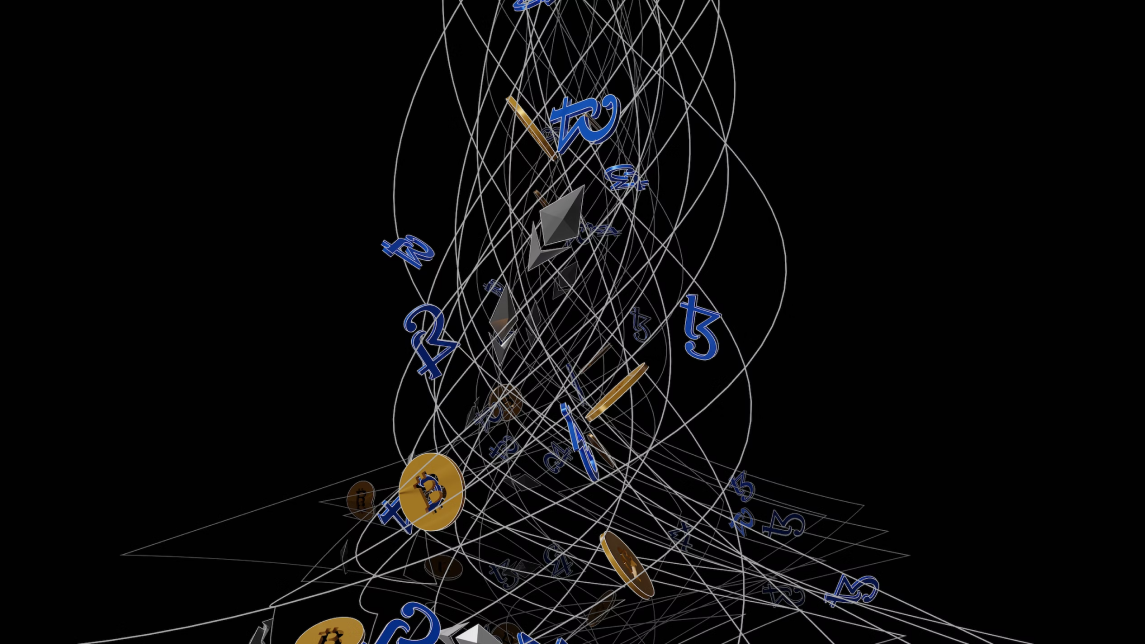Powell says the Fed is ready to provide dollar liquidity to foreign central banks through swap lines

Federal Reserve Chair Jerome Powell warned on Wednesday in Chicago that the U.S. central bank could be forced into a situation where it has to make tough, possibly painful decisions.
The warning came as the Federal Reserve tries to deal with economic pressure coming from President Donald Trump’s escalating trade war.
Powell added that the Federal Reserve will continue to carry out its responsibilities independently, emphasizing that its independence “is a matter of law.”
He also rejected the notion of what Wall Street calls a ‘Fed put’ and reaffirmed that the Fed stands ready to provide dollar liquidity to foreign central banks through swap lines “if needed.”
Powell’s job has become much harder now
The Fed has two jobs—keep inflation under control and make sure the labor market stays strong. Powell said those two goals are now at risk of colliding. “We may find ourselves in the challenging scenario in which our dual-mandate goals are in tension,” he said.
That means if prices keep rising due to tariffs, and the job market gets weaker at the same time, the Fed might be stuck choosing between fighting inflation or saving jobs. It can’t do both at once. Not with the way things are going.
Powell said that if the Fed is forced to react, they’ll first look at how far inflation is from the Fed’s 2% target. Then they’ll look at how bad the labor market gets. And finally, they’ll estimate how long it might take for either of those to return to normal.
“We would consider how far the economy is from each goal, and the potentially different time horizons over which those respective gaps would be anticipated to close,” Powell said. He also made it clear that there’s no rush to change interest rates for now, because of how unpredictable trade policy has become.
“As that great Chicagoan Ferris Bueller once noted, ‘Life moves pretty fast,’” Powell said. “For the time being, we are well positioned to wait for greater clarity before considering any adjustments to our policy stance.”
Powell said that even if tariffs cause short-term inflation, the Fed’s main focus is to make sure people don’t start expecting inflation to stay high. The central bank believes that inflation expectations can cause more damage than inflation itself.
If businesses and households think prices will keep going up for years, they’ll act accordingly—raising prices, pushing for higher wages, pulling back on investments. That chain reaction is what the Fed wants to stop before it starts.
Inflation already surged in 2021. But it dropped hard after the Fed raised interest rates sharply in 2022 and 2023. By February, inflation had fallen to about 2.5%, down from over 7% in 2022. Powell warned that new tariffs could undo those gains.
He also hinted that if the Fed’s two goals come into conflict, the priority might be price stability. Powell said the Fed would try to find balance between fighting inflation and supporting the labor market, but added that “without price stability, we cannot achieve the long periods of strong labor market conditions that benefit all Americans.”
He compared the Fed’s situation to a soccer goalie guessing which way to dive on a penalty kick. It’s a split-second decision, and getting it wrong hurts. He said the Fed has to decide whether to deal with inflation or with slowing growth, knowing full well that fixing one could break the other.
During a press conference in November, Powell was asked what the Fed would do if it faced rising inflation and a stagnant economy at the same time. He refused to say exactly how the central bank would respond.
“The whole plan is not to have stagflation, so we don’t have to deal with it,” Powell said. Then he admitted the real problem: “It’s, of course, a very difficult thing because anything you do with interest rates will hurt one side or the other—either the inflation mandate or the employment mandate.”
Cryptopolitan Academy: Want to grow your money in 2025? Learn how to do it with DeFi in our upcoming webclass. Save Your Spot
Read More

Stocks and bonds set to crash if and when Trump makes a move against Fed’s Jerome Powell
Powell says the Fed is ready to provide dollar liquidity to foreign central banks through swap lines

Federal Reserve Chair Jerome Powell warned on Wednesday in Chicago that the U.S. central bank could be forced into a situation where it has to make tough, possibly painful decisions.
The warning came as the Federal Reserve tries to deal with economic pressure coming from President Donald Trump’s escalating trade war.
Powell added that the Federal Reserve will continue to carry out its responsibilities independently, emphasizing that its independence “is a matter of law.”
He also rejected the notion of what Wall Street calls a ‘Fed put’ and reaffirmed that the Fed stands ready to provide dollar liquidity to foreign central banks through swap lines “if needed.”
Powell’s job has become much harder now
The Fed has two jobs—keep inflation under control and make sure the labor market stays strong. Powell said those two goals are now at risk of colliding. “We may find ourselves in the challenging scenario in which our dual-mandate goals are in tension,” he said.
That means if prices keep rising due to tariffs, and the job market gets weaker at the same time, the Fed might be stuck choosing between fighting inflation or saving jobs. It can’t do both at once. Not with the way things are going.
Powell said that if the Fed is forced to react, they’ll first look at how far inflation is from the Fed’s 2% target. Then they’ll look at how bad the labor market gets. And finally, they’ll estimate how long it might take for either of those to return to normal.
“We would consider how far the economy is from each goal, and the potentially different time horizons over which those respective gaps would be anticipated to close,” Powell said. He also made it clear that there’s no rush to change interest rates for now, because of how unpredictable trade policy has become.
“As that great Chicagoan Ferris Bueller once noted, ‘Life moves pretty fast,’” Powell said. “For the time being, we are well positioned to wait for greater clarity before considering any adjustments to our policy stance.”
Powell said that even if tariffs cause short-term inflation, the Fed’s main focus is to make sure people don’t start expecting inflation to stay high. The central bank believes that inflation expectations can cause more damage than inflation itself.
If businesses and households think prices will keep going up for years, they’ll act accordingly—raising prices, pushing for higher wages, pulling back on investments. That chain reaction is what the Fed wants to stop before it starts.
Inflation already surged in 2021. But it dropped hard after the Fed raised interest rates sharply in 2022 and 2023. By February, inflation had fallen to about 2.5%, down from over 7% in 2022. Powell warned that new tariffs could undo those gains.
He also hinted that if the Fed’s two goals come into conflict, the priority might be price stability. Powell said the Fed would try to find balance between fighting inflation and supporting the labor market, but added that “without price stability, we cannot achieve the long periods of strong labor market conditions that benefit all Americans.”
He compared the Fed’s situation to a soccer goalie guessing which way to dive on a penalty kick. It’s a split-second decision, and getting it wrong hurts. He said the Fed has to decide whether to deal with inflation or with slowing growth, knowing full well that fixing one could break the other.
During a press conference in November, Powell was asked what the Fed would do if it faced rising inflation and a stagnant economy at the same time. He refused to say exactly how the central bank would respond.
“The whole plan is not to have stagflation, so we don’t have to deal with it,” Powell said. Then he admitted the real problem: “It’s, of course, a very difficult thing because anything you do with interest rates will hurt one side or the other—either the inflation mandate or the employment mandate.”
Cryptopolitan Academy: Want to grow your money in 2025? Learn how to do it with DeFi in our upcoming webclass. Save Your Spot
Read More

